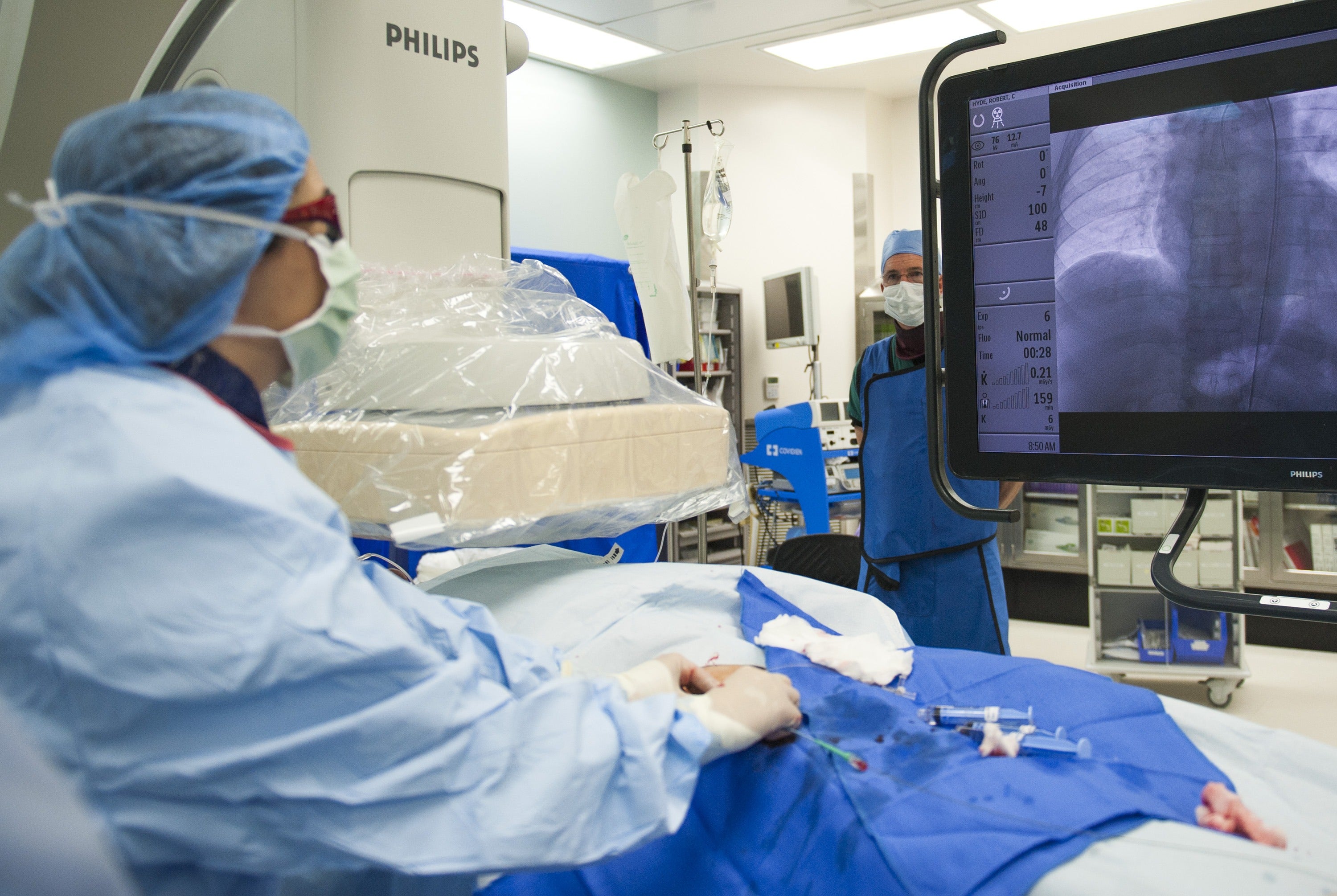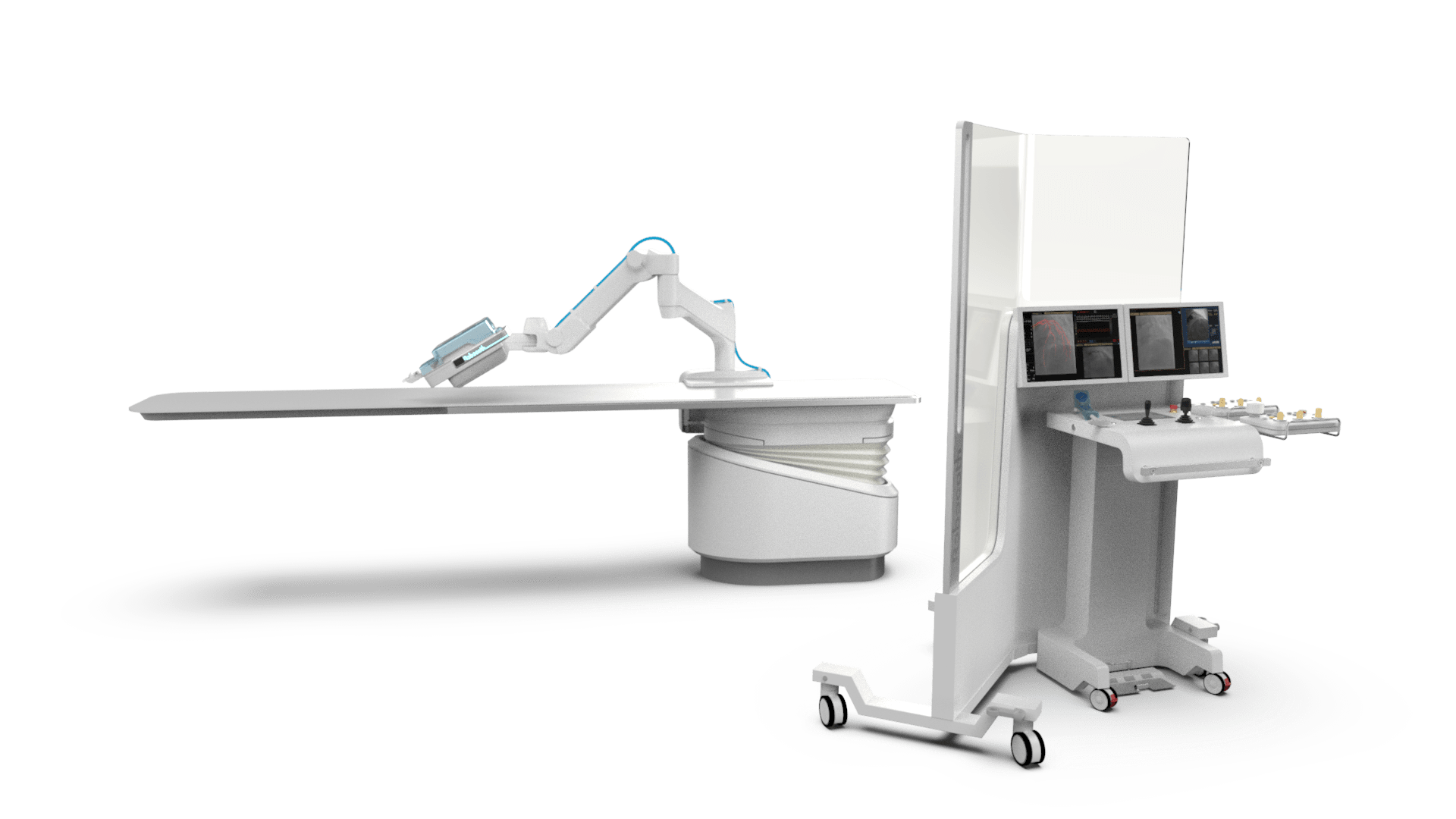
One of the leading ways technology is increasingly being integrated into surgical practices is with robotics. Jamie Bell takes a look at Robocath — a French company using its R-One device to make angioplasties more precise and safer.
Atherosclerosis is a condition in which the arteries become clogged with fatty deposits of plaque known as atheroma.
This leads to the arteries narrowing and hardening, restricting blood flow and reducing the supply of oxygen around the body — while also increasing the risk of blood clots.
In serious cases, atherosclerosis can cut off the flow of blood to the brain or heart, and ultimately lead to life-threatening cardiovascular diseases (CVDs) such as angina, strokes, or heart attacks.
Although regular exercise, improved diet and medicines to reduce the risk of blood clots are all recommended by the UK National Health Service (NHS), more advanced cases can require an angioplasty.
This involves using a balloon to stretch out the arteries, increasing blood flow and reducing the likelihood of CVDs developing. Many modern angioplasties also involve inserting an expandable mesh tube, known as a stent, to permanently widen the damaged artery.
To prevent the need for invasive surgery, this is carried out by inserting a catheter into the body through the wrist or groin, which then is controlled by a doctor and guided by x-ray video.
The R-One is a robotic technology, developed by Robocath, in an effort to assist surgeons and make these procedures safer, and more precise.
History of Robocath
Robocath is a French medtech start-up, founded in 2009 by Dr Philippe Bencteux — a former radiologist who is now the company’s president.
It designs and develops robotic solutions to treat CVDs, before taking them to the commercial market.
Robocath received its first funding round, led by UK investor M Capital Partners, in May 2017 — raising 4.7m euros ($5.3m).
It has since received two more significant investments, and its current total funding sits at €11.4m ($12.8m).
The start-up, based in Rouen in the north of France, has more than 25 employees, and is aiming to become a world leader in vascular robotics by providing safe, reliable technologies.
Its R-One device is the first, and to date, the only technology Robocath has fully developed.
R-One: How Robocath is making coronary angioplasties more precise
Coronary angioplasties are specifically performed to remove build-ups of atheroma in the coronary arteries — the vessels that supply oxygenated blood to the heart muscle.
Consisting of a robotic arm and a control unit, the R-One allows surgeons to precisely guide a catheter through the patient’s blood vessels, and Robocath says it does this with “enhanced, specific movements”.

This is made possible by R-Grasp — a unique anthropomorphic technology capable of reproducing human hand movements identically throughout the procedure, offering the doctor greater freedom of movement.
Another element of the device is R-Lock, which keeps the guidewire for maneuvering the catheter into the body perfectly stable, reducing the chance of errors occurring.
Robocath says 74% of cardiology surgeons are interested in enhancing their manual movements during angioplasties and other procedures — making these features necessary.
Other benefits of the R-One
The control unit from which surgeons use joysticks to operate the R-One arm has a mobile radiation screen called Radio-Stop, protecting the specialist from x-rays during the procedure.
This makes conditions safer for both doctor and patient — Robocath says 63% of cardiology surgeons are concerned about the occupational hazards of radiation exposure.
The R-One also features “open architecture”, meaning it is compatible with a number of market-leading devices including balloons, stents, and guidewires.
This architecture also means it can guide up to two balloon/stent catheters — but not at the same time.
Robocath claims it takes just minutes to install the R-One and integrate it with other cardiology intervention technologies, and learning to use the device is both easy and intuitive.
The R-One received CE certification for use in Europe in February 2019.
The first robotic coronary angioplasties in Africa
In December 2019, Robocath revealed its device had been used to complete the first robotic angioplasties performed in Africa.
The R-One assisted Dr Faizel Lorgat, an interventional cardiologist at the Netcare Christiaan Barnard Memorial Hospital in Cape Town, South Africa, in performing six coronary angioplasties.
These procedures were carried out as part of a distribution agreement between Robocath and South African medtech group Vertice.

Dr Bencteux said: “We are delighted with the success of these first robotic procedures at the Netcare Christiaan Barnard Memorial Hospital — a model institution in the treatment of heart disease.
“This facility commemorates the surgeon who performed the world’s first heart transplant, in Cape Town.
“We are pleased to see its determined focus on innovation and excellence being reflected and continuing today with our robot.”



